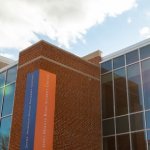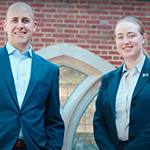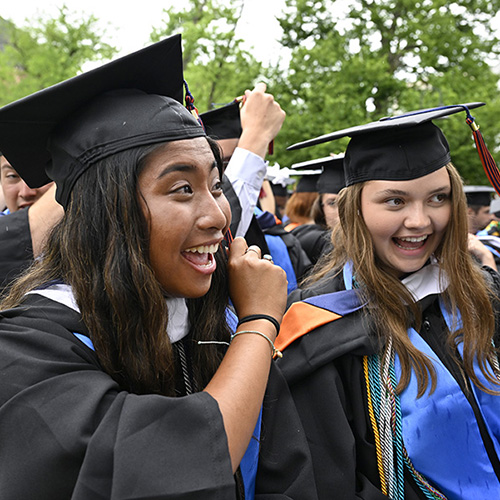
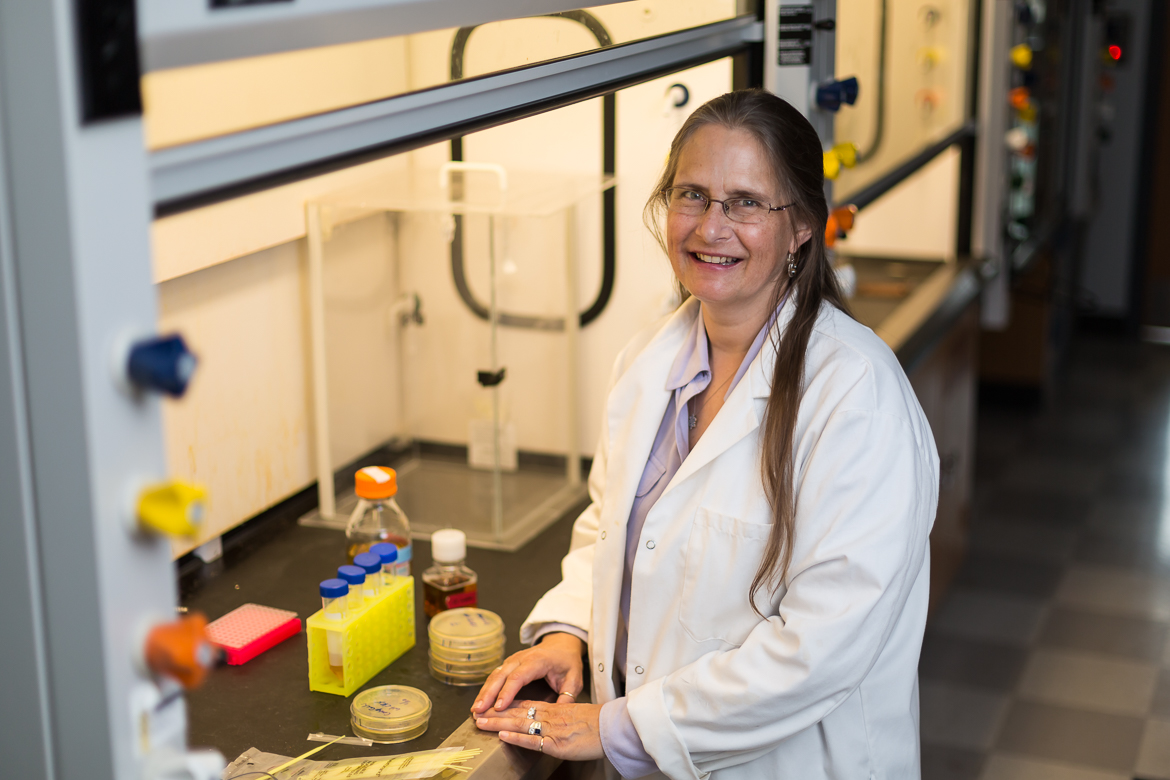
Over the years, Chemistry Prof. Koren Lipsett has owned and rescued horses. Today, they are a focus of her research on deafness in humans.
“My research lab focuses on genomic studies so we can understand human disease,” said Lipsett.
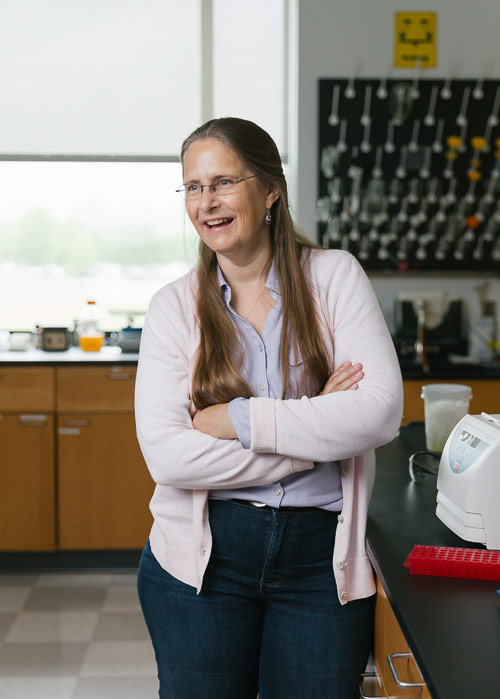 So far, Lipsett and her students have looked at blind cats, fibroblast growth factor (hair length) in cattle, and for the past seven years, deafness in horses. They hope by researching these issues and genetic diseases in large mammals, it will help researchers better understand how to treat human genetic disorders, like congenital blindness and deafness.
So far, Lipsett and her students have looked at blind cats, fibroblast growth factor (hair length) in cattle, and for the past seven years, deafness in horses. They hope by researching these issues and genetic diseases in large mammals, it will help researchers better understand how to treat human genetic disorders, like congenital blindness and deafness.
Suzanne E. DiNello-Schleicher ’10, a biology and chemistry double major who is today a veterinarian, was the inspiration behind the horse project. One day in Lipsett’s lab, she was doing some preliminary research on the Internet and came across a story about a deaf colt.
“Because she’s a horse person and a vet person, she said, ‘maybe we can pursue this,’” said Lipsett. “Well it turns out the family that owned that particular horse also had the parents and siblings in this pedigree of Spanish Mustangs. Not just one offspring was deaf. There were two deaf offspring that came from the same stallion and two different mares. So that started the project.”
Working with larger mammals has its benefits, Lipsett says. For one, large mammals, as opposed to mice and rats, live longer. If, during transitional research, researchers are completing a treatment study, this allows scientists to study long-term implications. It’s humane: Lipsett uses hair plucked from the horse’s mane. It’s convenient: she uses her own horse and horses from the SPCA as experimental controls. She is currently working with a family from Virginia who owned deaf horses with white coats and blue eyes—the phenotype that studies have shown to correlate with deafness in other animals, like the Siberian Husky.
This knowledge helped Lipsett’s lab narrow down their focus to a candidate gene called the KIT gene.
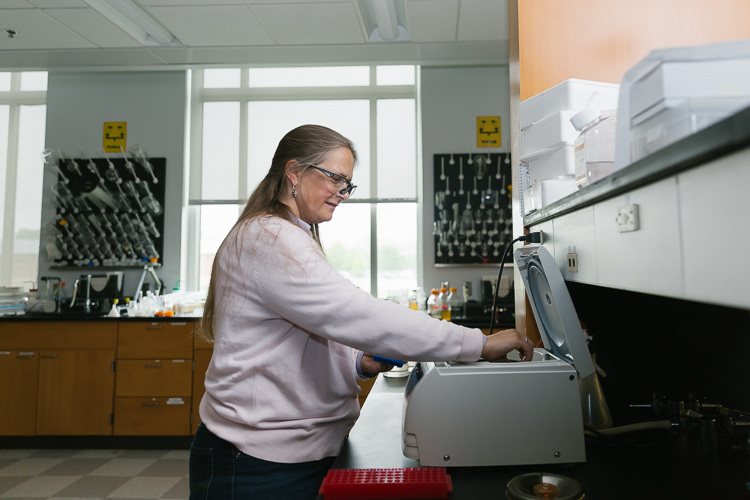
“In [other cases of mammals] that had deafness, white pigmentation, and blue eyes, it has come down to the KIT gene,” said Lipsett. “That particular gene is complex, but that’s not the only one that has been found—there are 5 or 6 genes that we identified as candidate genes. And our job is to methodically go through, sequencing those genes, to see if we can find the mutation.”
The process involves examining the gene’s exons, the segments of the DNA that contain the coding information, or set of instructions, that translate to the protein of interest, for example.
Benjamin Gantz ’16 was responsible for examining exon-21 in the KIT gene. They ran into several issues with designing primers, which is the first step to sequencing a gene.
“Ben got to a point where we understood where the problem was, and by the time he graduated we a had a good understanding of what to do next,” said Lipsett.
“Ben would say, ‘wow, I’m doing real science,’ and I’d say, ‘You've been doing real science the whole time!’ Because you need to think outside the box. There’s no canned answer.”
“Many students have worked on this project before me. It was amazing to be able to pick up where they left off and continue this research,” echoed Gantz. “In independent research labs like Dr. Lipsett's, you are determining the answers to questions that no one on the planet knows. Other scientists may use our research to further their own understanding or study, but our findings will be a starting point for them.”
Over the years, several students have worked on pieces of the project that have been published, like Kaytie Innamorati ’14, who is currently conducting research on Alzheimer’s Disease as a Ph.D. candidate at Drexel University. She is listed as a co-author on the abstract, “Determining the genetic basis of equine deafness via candidate gene studies.” Also, Alecia Achimovich ’16, a Ph.D. candidate at The University of Virginia, is a co-author with Kaytie on a recent abstract.
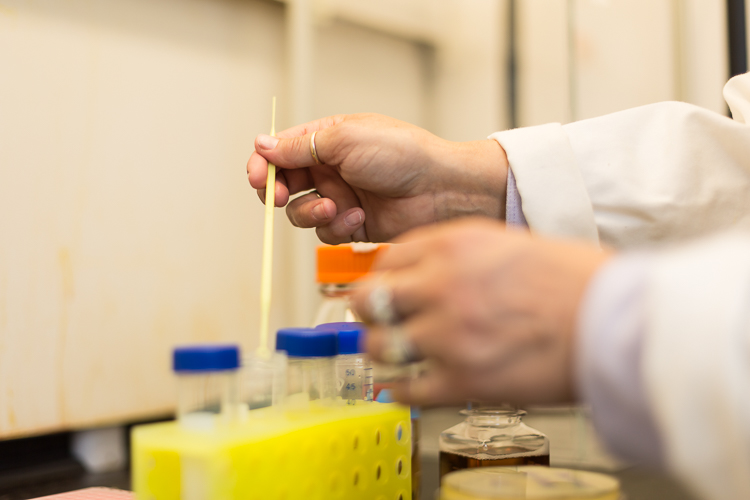
Today, Lipsett says the research is at the point where they have narrowed down which genes to focus on, and now it’s about consolidating the data order to identify a putative gene mutation. As with the blind cat study, the next step will be to explore the mechanism of pathology that will help define how the gene mutation translated to disease symptoms like blindness or deafness.
“We care about this because we can directly correlate it to human studies,” said Lipsett. “The more we understand the gene function in a mammal model, the more likely we can understand the equivalent function in humans. Then, we can apply that knowledge to characterize and potentially treat the genetic disorder.”
A biological career pathway
Lipsett didn’t start working with DNA until she came to Gettysburg. But looking at her journey, the path to that research seemed inevitable.
“I loved biochemistry in college,” she said. “I didn’t do genomics, I did protein studies. It’s related to the biological system, and that’s what’s exciting to me. My work evolved slowly, as in any research career. You don’t necessarily stay in the same track, but your research takes you down new tracks and lets you solve cool new problems.”
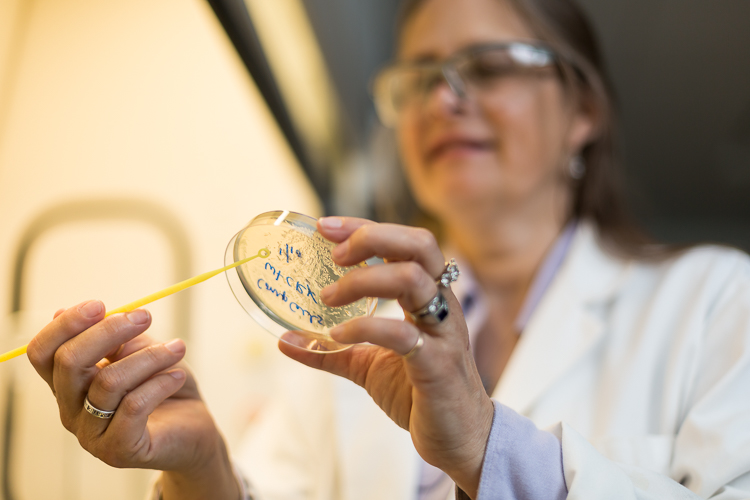 During Lipsett’s postdoctoral research at Johns Hopkins University, she studied metabolic pathways at the genomic level and how specific genes, and the gene products, participate in a given biological pathway. She and her colleagues worked on identifying the gene corresponding to an enzyme involved in the aflatoxin biosynthetic pathway in fungus, furthering their understanding of the pathways in natural product biosynthesis. For example, aflatoxins are a family of carcinogenic toxins that are produced by fungi and can be found contaminating grain and peanuts (peanut butter). Aflatoxin can cause liver cancer. In the United States, we screen our crops for the contaminant, but other countries might not.
During Lipsett’s postdoctoral research at Johns Hopkins University, she studied metabolic pathways at the genomic level and how specific genes, and the gene products, participate in a given biological pathway. She and her colleagues worked on identifying the gene corresponding to an enzyme involved in the aflatoxin biosynthetic pathway in fungus, furthering their understanding of the pathways in natural product biosynthesis. For example, aflatoxins are a family of carcinogenic toxins that are produced by fungi and can be found contaminating grain and peanuts (peanut butter). Aflatoxin can cause liver cancer. In the United States, we screen our crops for the contaminant, but other countries might not.
“My interest is studying these pathways,” she said. Because nature produces antifungal, anticancer and antibacterial agents, she asks questions like, What structural features of the molecule inhibit growth, and How can we modify and make a better antifungal [agent]?
“By applying knowledge gained from understanding the biosynthetic pathway, and the genes involved in that pathway, one can learn from nature and perhaps make the next new therapeutic drug based on that knowledge,” she said. “Learning from nature is really cool!”
Lipsett describes herself as “jumping” into mitochondrial DNA. Her mitochondrial genomic studies began with looking at genomic variations in mitochondrial DNA, some of which have been identified as causing mitochondrial myopathies.
Plucking Patent
This past January, Lipsett received some exciting news: A letter notifying her that she was issued a United States patent for the “Isolation and Characterization of a Single Mitochondron.”
Lipsett explained that one characteristic of mitochondria is that it contains multiple copies of the mitochondrial genome, and each cell can contain many mitochondria.
“If there is a mutation in one copy of the genome, and there are 100 copies total, the other 99 copies are fine,” she said. “So why should one copy interfere with the cell?” Her questions led to studies to learn more about how that one modified copy becomes the predominant version, and therefore, causative of mitochondrial disease symptoms.
She and her colleagues at the National Institute of Standards and Technology designed a technique using what is described as “optical tweezers” that can trap and then isolate a single mitochodrion using an infrared laser.
Lipsett decided to apply for the patent after speaking with one of her former research students.
“Christian Bauer ’97, a biochemistry and molecular biology major, went to get his master’s in forensic science,” said Lipsett. Bauer continued his education and became a patent attorney. “He was visiting to speak with students for a career panel, and he said, ‘apply for a patent—that’s intellectual property!’”
Lipsett switched gears and began examining nuclear—as opposed to the mitochondrial—genomic variations. During a sabbatical at the National Cancer Institute in Frederick, her research path transitioned to examining pedigrees of large mammals in order to identify the gene responsible for a specific disease.
“I like learning new tools for finding that needle in the haystack, that Eureka moment,” she said. “We haven’t found it yet in the deafness project, but we’ve gathered enough information from this deaf horse study to think it’s more complex than just one gene.”
